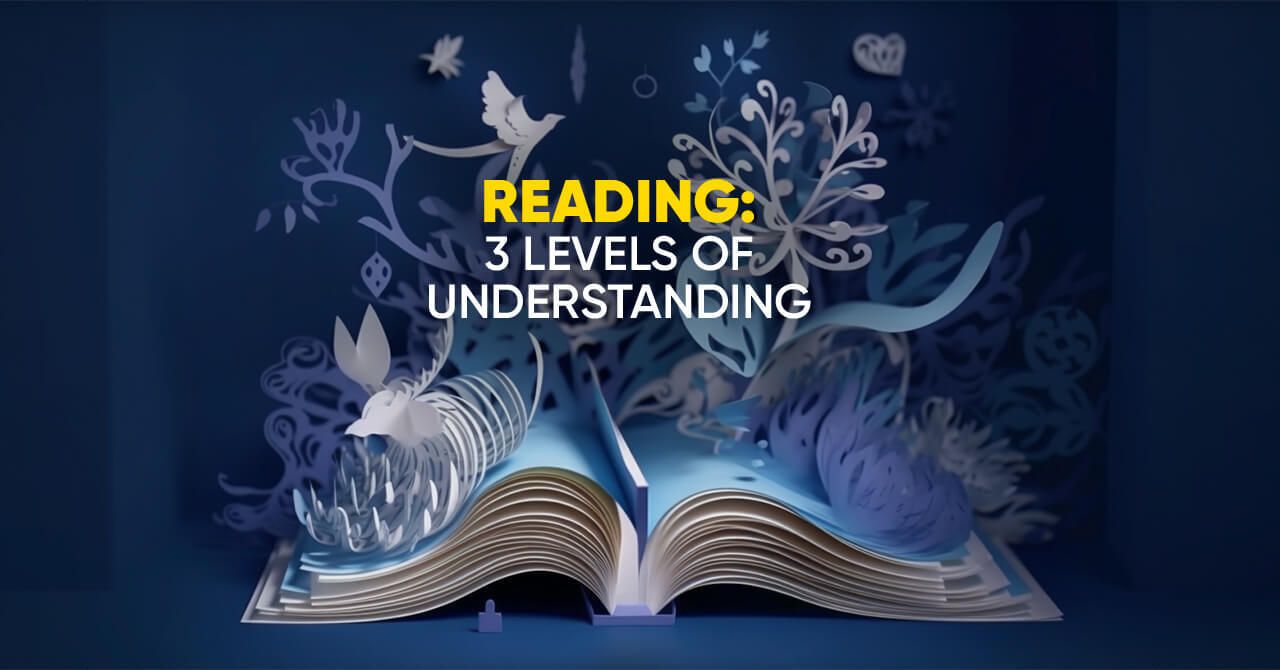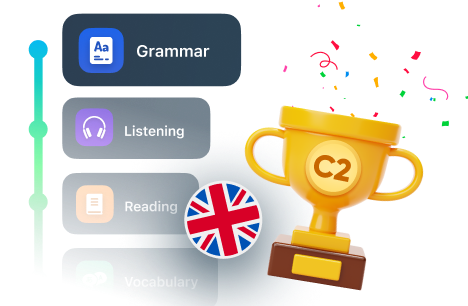
Reading: The Three Levels of Understanding
By teaching students to read and analyze texts at all three levels of understanding, educators can help students develop the skills and strategies they need to comprehend and engage with a wide variety of texts.

Get a FREE guide!
Want to sound like a native English speaker?
Get our free PDF with top tips that work.

Check your email!
While reading a comprehension text, ESL students resort to consecutive translation. In other words, they read the text in English, and meanwhile, they try to translate every single word into their mother tongue. Reading a text in English and translating it into our mother tongue is more of a hindrance than a help. This is a long process, which often leads to failure in reading.
A good teacher will teach their students the three levels of understanding in order to help them comprehend any reading passage.
Semantic level
The first level of understanding is the semantic level. This has to do with the student’s ability to understand the meaning of the given word in the context in which it has been used. We all know that over 75% of English words are polysemous, having multiple meanings. For example, the sentence “I saw her duck” can be interpreted in two ways. The first interpretation is, “I saw the girl’s duck,” but the second interpretation is, “I saw the girl lower her body to avoid something.” Because the word “duck” is a polysemous word, semantic ambiguity will arise, and the student cannot work out the meaning of such a polysemous word unless they pay attention to the context in which this word has been used.
Similarly, the sentence “The policeman arrested the thief with a gun” is syntactically ambiguous, as we do not know who was holding a gun during the arrest operation. This sentence could be interpreted as “The policeman used a gun to arrest the thief” or “The policeman arrested the thief who had a gun.” The teacher should encourage their students not to translate words into their mother tongue; instead, they should direct them to explore the context to understand the meaning of polysemous words.
Schematic level
The second level of understanding is the schematic level. Before reading any text, the teacher should activate their students’ schemata. They should invite their students to explore the visuals, if there are any, and read the title before asking them to read any text. This way, students will have a chance to connect what they already know with the new information. Establishing a meaningful relationship between the KNOWN and the NEW will help students understand the content of a text without necessarily knowing all the words they encounter in the text. Furthermore, based on the visuals that accompany the text and the title, students can make predictions before reading a text. In this way, students will set a purpose for their reading, which is to confirm or disconfirm their predictions. Students who read a text with no purpose in mind will probably fail to understand it.
Pragmatic level
The third level of understanding is the pragmatic level. When students read a text and translate it into their mother tongue, they will pay attention to the literal, not the pragmatic, meaning of words. Let us examine the following example: A math teacher asks his students the following question: “What is the sum of 4 times 4?” A student answered, “It’s 8.” The teacher told him, “Wow! You’re a genius!” The reader who attends to the literal meaning of the teacher’s utterance would understand that the teacher is praising the student, while in reality, the teacher is mocking the student because they gave a wrong answer. The problem is exacerbated if a reading passage includes idiomatic language. A sentence like “Mary did not go to school because she was feeling a bit under the weather” may be interpreted in this way: “Mary did not go to school because the weather was awful.” The teacher’s role is to draw the student’s attention to the importance of the pragmatic level of understanding so that they can fully understand the meaning intended by the writer.
Conclusion
In conclusion, understanding the semantic/syntactic, schematic, and pragmatic levels of a text is crucial for effective reading comprehension. At the semantic/syntactic level, students need to understand the meaning and structure of individual words and sentences. This involves recognizing and interpreting vocabulary, grammar, and syntax. At the schematic level, students need to understand the overall structure and organization of a text, such as identifying main ideas, supporting details, and the relationships between different pieces of information. At the pragmatic level, students need to understand the social and cultural context in which a text is written. This involves interpreting the author’s purpose, tone and intended audience, as well as recognizing figurative language, idioms, and other cultural references. By teaching students to read and analyze texts at all three levels of understanding, educators can help students develop the skills and strategies they need to comprehend and engage with a wide variety of texts.


















